Renting submersible pumps has become a strategic choice for industries like construction, mining, and wastewater management, where efficient dewatering and fluid handling are critical to project success. A submersible pump rental allows businesses to access high-performance equipment without the financial commitment of purchasing, making it a cost-effective and flexible solution for both short-term and long-term projects. Submersible pumps are designed to operate underwater, making them ideal for handling challenging environments such as flooded construction sites, deep mining operations, and wastewater treatment facilities. The ability to pump fluids from significant depths while withstanding corrosive and abrasive materials makes them essential for industries dealing with heavy-duty fluid transfer.
Opting for a submersible pump rental offers several advantages over purchasing. First, it reduces upfront costs and eliminates the need for ongoing maintenance and repair expenses, allowing businesses to allocate resources more efficiently. Rentals also provide flexibility—companies can select the right pump based on flow rate, head height, and material compatibility without being tied to a single model. Additionally, renting from a reputable provider ensures access to the latest pump models and technology, including improved energy efficiency and enhanced durability. While the benefits of renting are clear, many businesses encounter challenges that can impact performance and project timelines. From selecting the wrong pump size to poor installation, these issues can lead to increased costs and downtime. This article will identify the most common challenges in submersible pump rentals and provide practical solutions to help businesses maximize efficiency and avoid costly mistakes.
Understanding Submersible Pump Rentals
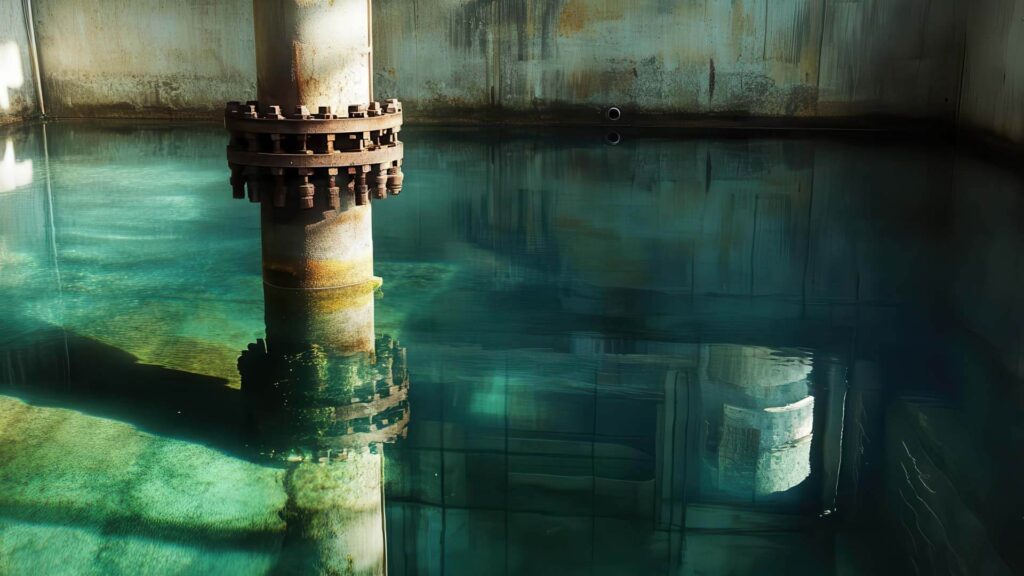
What is a Submersible Pump?
A submersible pump is designed to operate while fully submerged in the fluid it pumps. Unlike surface pumps, which rely on suction to draw liquid, submersible pumps push the liquid to the surface using a hermetically sealed motor connected to an impeller. This design allows for more efficient fluid transfer, especially in deep or challenging environments.
Submersible pumps are built to withstand harsh conditions, including abrasive materials, high pressure, and corrosive fluids. Their sealed design protects the motor from damage and prevents the pump from overheating, making them ideal for heavy-duty applications where reliability and performance are essential.
Types of Submersible Pumps
Different types of submersible pumps are used depending on the nature of the fluid and the site conditions:
- Sewage Pumps – Designed to handle solid waste and sludge, making them ideal for wastewater treatment plants and municipal sewage systems.
- Slurry Pumps – Built to handle thick slurries with high solid content, commonly used in mining and dredging operations.
- Dewatering Pumps – Used for removing clean or dirty water from construction sites, basements, and tunnels. They are lightweight and portable, making them a popular choice for temporary applications.
- Well Pumps – Installed in deep wells to pump groundwater to the surface for irrigation, residential, and industrial use.
- Utility Pumps – General-purpose pumps used for light dewatering tasks, such as removing water from pools or flooded basements.
Common Applications for Submersible Water Pump Rentals
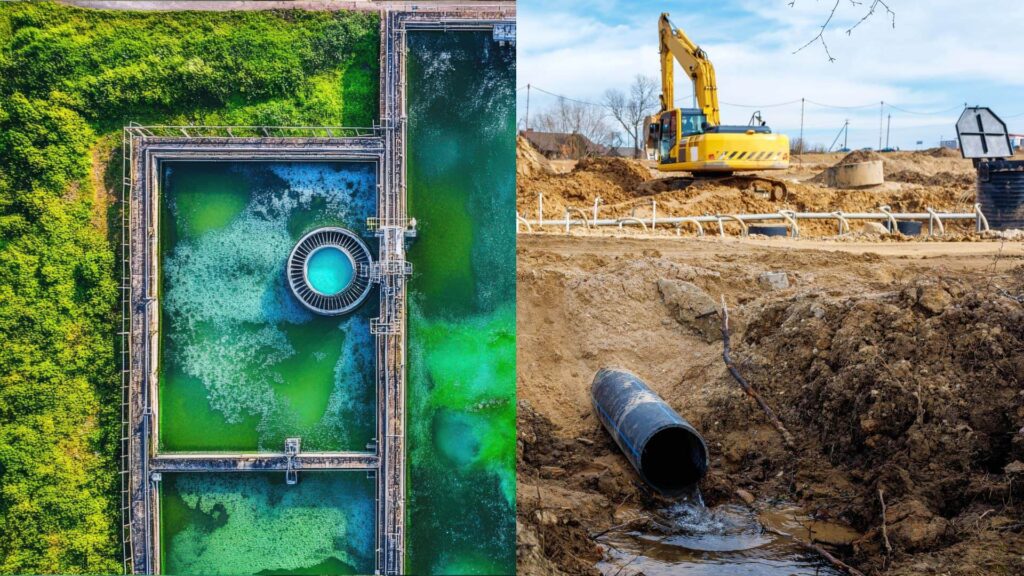
A submersible pump rental is a versatile solution for industries that require reliable water and fluid management. Common applications include:
- Flood Control – Rapid water removal during heavy rainfall or flooding events to prevent property damage and maintain operational continuity.
- Construction Sites – Dewatering excavations and foundations to keep the worksite dry and safe.
- Mine Dewatering – Removing water from mining shafts and tunnels to enable safe working conditions and prevent equipment damage.
- Wastewater Management – Handling industrial and municipal wastewater, including transferring sludge and treating sewage.
- Marine and Offshore Projects – Managing water intake and discharge in offshore platforms and marine construction projects.
Why Choose Submersible Pump Rentals Over Purchasing?
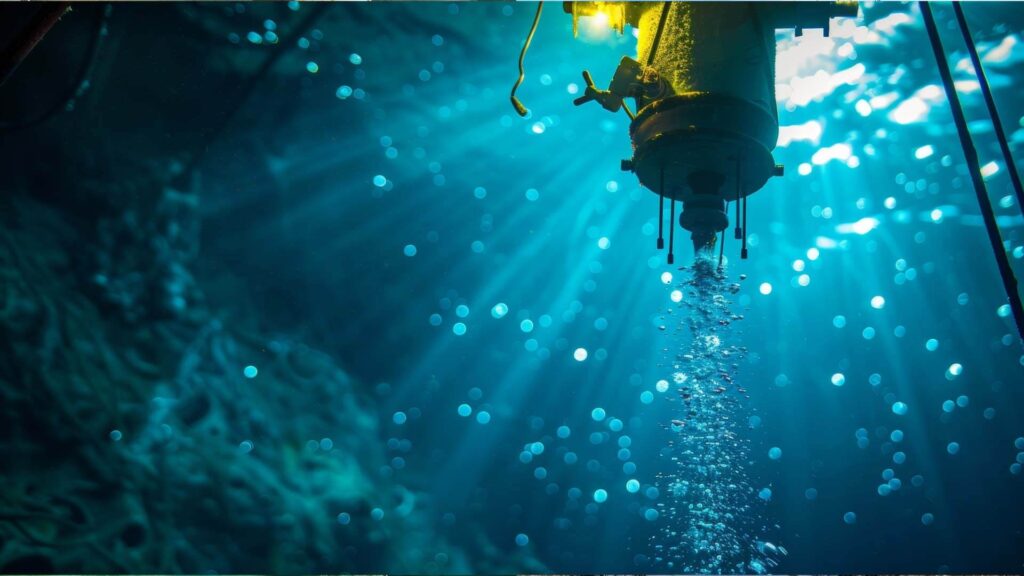
Investing in submersible pumps can be expensive, especially for temporary or variable projects. Opting for a submersible pump rental provides several advantages that make it a smarter financial and operational decision:
- Lower Upfront Cost
Purchasing a submersible pump involves a significant capital investment, but businesses can avoid the high upfront cost by renting one. This allows companies to allocate their budget to other critical project needs.
- Reduced Maintenance Responsibility
When you rent a pump, the rental provider typically handles maintenance and repairs. This reduces downtime and ensures that the equipment is always in optimal working condition.
- Flexibility to Scale Equipment Based on Project Needs
Project requirements can change quickly. Submersible pump rentals allow you to easily upgrade or switch to a different pump model to match changing flow rates, fluid types, or site conditions. This level of flexibility ensures that you have the right equipment for every phase of the project.
- Access to Expert Guidance and Support
Reliable rental providers offer expert support to help you select the right pump and troubleshoot any operational issues. Their experience ensures that you maximize pump performance and avoid common pitfalls.
Common Challenges in Submersible Pump Rental
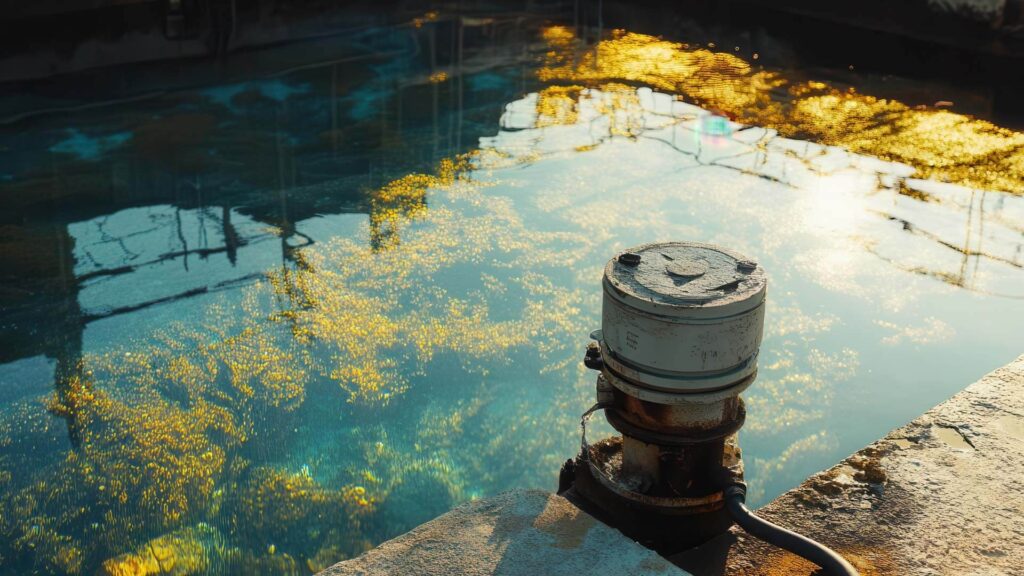
While submersible pump rentals offer flexibility and cost savings, several challenges can arise if proper planning and execution are overlooked. From incorrect pump selection to poor installation, these issues can reduce efficiency, increase operating costs, and even cause project delays. Understanding these challenges is key to maximizing the benefits of submersible pump rentals and ensuring reliable performance in the field.
1. Incorrect Pump Selection
One of the most common mistakes in submersible pump rental is selecting the wrong pump for a specific application. Pumps are designed with specific flow rates, head heights, and material compatibilities, and failing to match these specifications to the project’s needs can result in poor performance.
- Wrong flow rate: A pump with insufficient flow capacity will struggle to move water efficiently, while an oversized pump may increase energy consumption and operational costs.
- Incorrect head height—The head height refers to the height at which the pump needs to lift the fluid. A mismatch can cause the pump to run dry or fail to meet the project’s water removal needs.
- Material incompatibility – Using a standard dewatering pump for abrasive slurries or corrosive fluids can lead to rapid wear and pump failure.
Impact: Reduced performance, higher energy costs, and increased wear and tear on the pump components.
2. Insufficient Site Assessment
A thorough site assessment is crucial for selecting the right pump and ensuring smooth operation. Failing to evaluate key environmental factors can lead to pump inefficiency and mechanical problems.
- Debris content – High levels of sediment or debris can clog standard pumps, requiring specialized slurry or solids-handling pumps.
- Fluid composition – Highly corrosive or abrasive fluids require pumps made from resistant materials like stainless steel or coated surfaces.
- Site elevation and distance – High head requirements or long discharge lines require higher pressure pumps to maintain consistent flow rates.
Consequences: Clogged pumps, reduced efficiency, increased energy consumption, and premature failure of pump components.
3. Inadequate Pump Sizing
Selecting the correct pump size is essential for optimal performance. An undersized pump may struggle to keep up with the flow rate, while an oversized pump can lead to wasted energy and poor system efficiency.
- Undersized pumps – May not be able to handle peak flow demands, leading to overflow or incomplete fluid transfer.
- Oversized pumps may cause short cycling, in which the pump frequently starts and stops, increasing wear on the motor and internal components.
- Variable flow rates – Some applications require pumps with adjustable speed or capacity to handle fluctuating flow conditions.
Challenges: Reduced performance, higher energy consumption, and shortened equipment lifespan.
4. Poor Installation and Setup
Even the right pump will fail to perform if it is not installed and set up correctly. Poor positioning, incorrect priming, or inadequate securing can lead to serious operational issues.
- Incorrect priming – Air pockets can prevent the pump from drawing fluid effectively, causing cavitation and damage to the impeller.
- Improper positioning: If the pump is not securely positioned, vibrations and movement can cause mechanical stress and damage.
- Inadequate connections – Loose or improperly sealed connections can lead to leaks, pressure loss, and system failure.
Risks: Cavitation, overheating, mechanical failure, and increased downtime.
5. Lack of Proper Maintenance and Monitoring
Neglecting regular maintenance and performance monitoring can lead to pump breakdowns and costly downtime. Even when renting, ensuring the pump is well-maintained during operation is critical for consistent performance.
- Seal integrity – Damaged or worn seals can allow fluid to enter the motor, causing electrical failure.
- Electrical connections – Loose or damaged wiring can cause inconsistent operation or electrical shorts.
- Wear and tear – Impeller wear, bearing damage, and motor degradation can reduce efficiency over time.
Impact: Increased likelihood of breakdowns, higher repair costs, and project delays.
6. Limited Availability and Lead Times
High demand for submersible pump rentals during peak seasons or emergencies can lead to limited availability, making it difficult to source the right pump quickly.
- Seasonal demand – Flooding, heavy rains, and high mining activity can create a surge in rental requests.
- Niche requirements: Due to limited inventory, Specialized pumps for slurry, high-head, or corrosive applications may have longer lead times.
- Emergencies—The Urgent need for dewatering during a flood or equipment failure may increase competition for available rental units.
Consequences: Project delays, higher rental costs, and compromised site safety due to insufficient water management.
How to Overcome Submersible Pump Rental Challenges
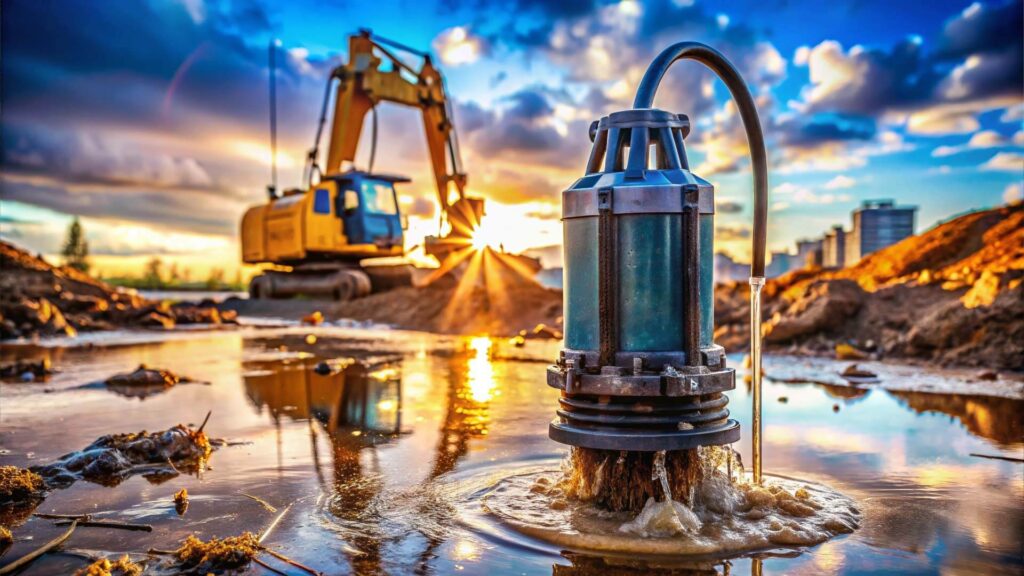
Overcoming challenges in submersible pump rental starts with proper planning, execution, and support. From selecting the right pump to ensuring proper maintenance, a strategic approach can significantly improve performance, reduce downtime, and maximize the efficiency of your submersible pump rentals. Here’s how to address the most common rental challenges:
1. Ensure Proper Pump Selection
Selecting the right pump for the job is critical to achieving optimal performance and avoiding costly inefficiencies. A knowledgeable rental provider can help you match the pump’s specifications to your project’s specific demands.
- Analyze project requirements – Assess the type of fluid (water, slurry, sludge), flow rate, and head height needed for the project.
- Provide detailed specifications. Accurate details about site conditions, debris content, and pressure requirements should be shared with the rental company to ensure that the correct pump model is selected.
- Account for variable conditions – If the site conditions are likely to change, choose a pump with adjustable capacity or variable speed capabilities.
Pro Tip: A reputable rental provider can help you interpret pump performance curves and recommend the best pump for the job.
2. Conduct Thorough Site Assessment
A detailed site assessment helps identify potential operational challenges before the pump is deployed, ensuring smooth and efficient performance.
- Evaluate environmental factors – Consider the type of fluid, debris load, and site elevation. High debris levels or abrasive materials may require a slurry pump, while high head height may necessitate a high-pressure pump.
- Check chemical composition – Corrosive fluids require pumps made from resistant materials like stainless steel or coated surfaces.
- Account for flow variations – Ensure the pump can handle changes in flow rate or pressure without causing cavitation or performance loss.
- Consider backup or secondary pumps – For high-risk applications or critical projects, having a backup pump on standby reduces downtime if the primary pump fails.
Pro Tip: A thorough site assessment minimizes the risk of pump failure and ensures the pump operates at peak efficiency.
3. Size the Pump Correctly
Choosing the right size pump is essential for maximizing energy efficiency and ensuring smooth operation. An undersized pump may struggle to keep up with demand, while an oversized pump can lead to increased energy costs and mechanical wear.
- Use pump curves and performance charts – Pump performance curves help determine the optimal flow rate and pressure for your project’s conditions.
- Match pump size to head and flow rate – Ensure the pump’s capacity aligns with both the vertical lift and horizontal discharge distance.
- Consult with experts – Rental providers and pump specialists can calculate the correct pump size based on site-specific conditions and project goals.
Pro Tip: Oversized pumps often lead to short cycling, which reduces the pump’s lifespan and increases energy consumption.
4. Follow Correct Installation Procedures
Proper installation is critical to preventing operational issues and ensuring the pump performs efficiently from day one.
- Secure pump placement – Make sure the pump is properly anchored to prevent movement and vibration.
- Ensure correct priming – Improper priming can lead to cavitation, which damages the impeller and reduces performance.
- Verify air venting – Remove trapped air from the pump and discharge lines to prevent loss of suction.
- Check alignment and connections – Misaligned or loose connections can cause leaks and pressure loss, reducing the pump’s overall efficiency.
Pro Tip: To avoid startup issues, follow the manufacturer’s guidelines for priming, aligning, and securing the pump.
5. Implement a Maintenance Plan
Although renting a submersible water pump reduces the maintenance burden, regular inspections and monitoring during the rental period are essential to avoid performance issues and unexpected breakdowns.
- Schedule regular inspections – Monitor for signs of wear and tear, such as unusual noise, reduced flow rate, or excessive vibration.
- Check seals and electrical connections – Damaged seals and loose wiring can lead to pump failure or electrical shorts.
- Monitor pump performance – Use performance data to identify and address declining efficiency or increasing energy consumption.
- Clean the pump regularly – Removing debris buildup prevents clogging and maintains optimal performance.
Pro Tip: Partnering with a rental provider that offers maintenance support ensures quick resolution of any issues.
6. Partner with a Reliable Rental Provider
Working with a trusted rental provider simplifies the process and ensures that you receive the right equipment and support throughout the project.
- Choose a provider with a large inventory – A well-stocked rental company increases the chances of securing the right pump, even during high-demand periods.
- Look for quick delivery options – Fast turnaround on rentals minimizes project downtime.
- Access to technical support – A rental provider that offers technical assistance, troubleshooting, and on-site support helps resolve issues quickly.
- Flexible rental terms – A rental provider with flexible rental contracts and upgrade options allows you to adapt to changing project needs.
Pro Tip: Building a long-term relationship with a reliable provider can lead to better pricing and priority access to high-demand equipment.
Benefits of Overcoming Rental Challenges
Addressing the common challenges in submersible pump rental can significantly improve project efficiency, reduce costs, and enhance overall equipment performance. By ensuring proper pump selection, sizing, installation, and maintenance, businesses can maximize the value of their rentals and avoid costly delays or equipment failures.
1. Increased Efficiency and Project Success
Overcoming rental challenges ensures that the pump is properly matched to the specific demands of the project, leading to improved performance and faster results.
- Optimized flow rates and pressure – Correct pump sizing and selection enable the pump to operate at peak efficiency, reducing energy consumption and improving output.
- Reduced downtime – Proper installation and regular maintenance minimize the risk of mechanical failure, ensuring uninterrupted operation.
- Improved project timelines – A well-functioning pump ensures that dewatering, slurry handling, or fluid transfer is completed on schedule, avoiding costly project delays.
- Adaptability to site conditions – Choosing the right pump for specific environmental factors, such as debris load or chemical composition, prevents operational setbacks.
Efficient pump operation directly translates to faster project completion and greater overall productivity.
2. Lower Operational Costs and Reduced Downtime
Renting a pump that is correctly sized and maintained helps control costs by improving energy efficiency and reducing the need for repairs or replacements.
- Reduced energy consumption – An adequately sized pump consumes less power, lowering operational costs without compromising performance.
- Fewer repairs and replacements – Correct installation and proper maintenance reduce wear and tear, minimizing the need for costly repairs or downtime.
- Less standby time – A well-maintained pump reduces the likelihood of breakdowns, keeping the project running smoothly without costly delays.
- Avoiding emergency rentals – Proactively managing pump performance prevents unexpected failures, eliminating the need for last-minute rentals or replacements.
An efficient submersible pump rental setup allows businesses to focus on project execution rather than managing equipment issues.
3. Longer Pump Lifespan and Better Overall Performance
Proper pump sizing, installation, and maintenance extend the lifespan of the equipment, even when it’s a rental unit. This not only benefits the rental provider but also ensures consistent performance throughout the project duration.
- Less mechanical stress: Correct pump sizing and flow rate matching prevent cavitation and overheating, reducing wear on internal components.
- Improved motor and impeller durability – Reduced operational strain extends the life of key components, including the motor and impeller.
- Consistent performance – A well-maintained pump operates at full capacity without performance degradation, ensuring that the project’s fluid management needs are consistently met.
- Reduced environmental impact – Efficient pumps reduce energy consumption and emissions, supporting sustainable project practices.
Extending the lifespan of submersible water pump rentals ensures that the pump performs reliably, helping to maintain project momentum and reduce long-term costs.
Conclusion
Renting a submersible pump is a cost-effective and flexible solution for managing water and fluid transfer in construction, mining, wastewater management, and other demanding industries. However, to fully capitalize on the benefits of submersible pump rental, it’s essential to address common challenges such as incorrect pump selection, inadequate sizing, poor installation, and insufficient maintenance. By conducting a thorough site assessment, selecting the right pump for the job, and following best practices for installation and monitoring, businesses can significantly improve pump performance and project outcomes.
Overcoming these rental challenges leads to increased efficiency, reduced operational costs, and longer equipment lifespans. Working with a reliable rental provider ensures access to expert guidance, quick delivery, and technical support throughout the rental period. Ultimately, a well-executed submersible water pump rental strategy allows businesses to avoid costly downtime, streamline project timelines, and maximize the return on their rental investment.


